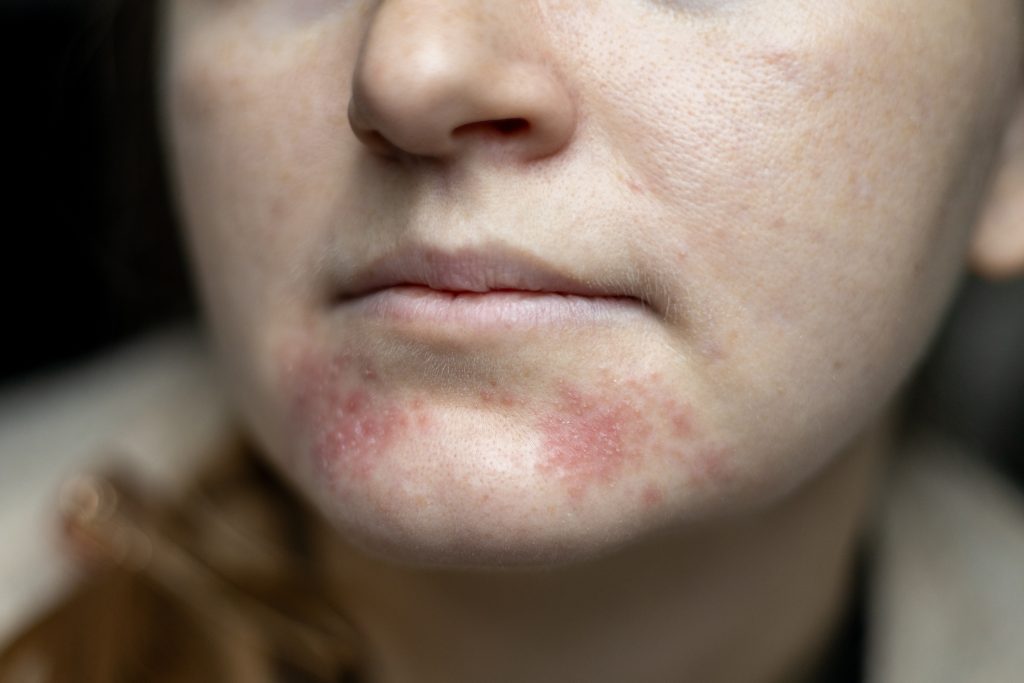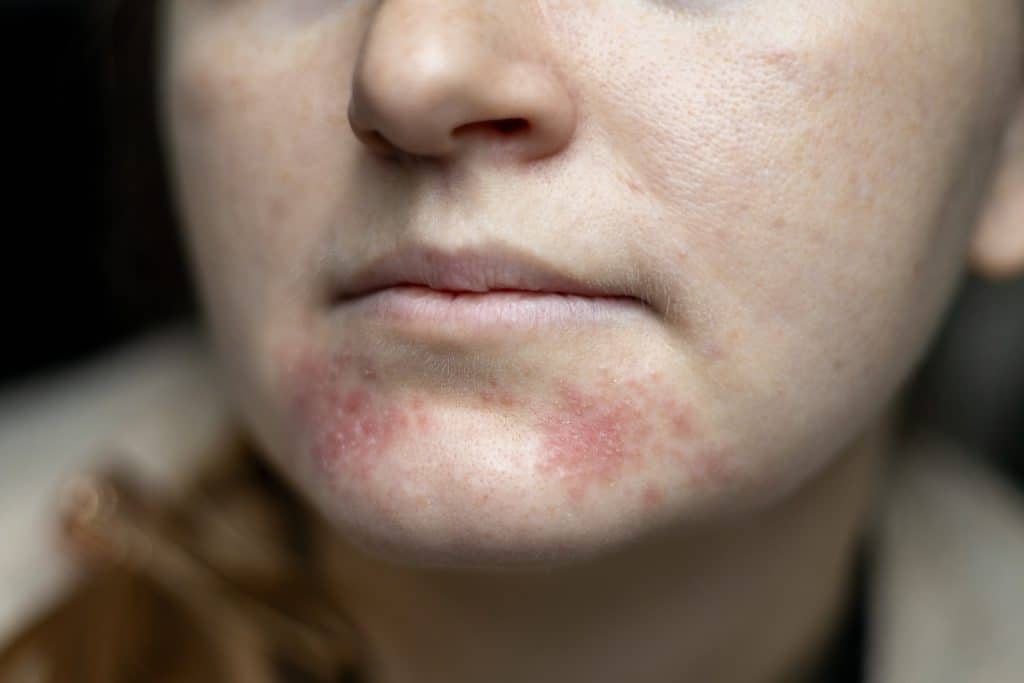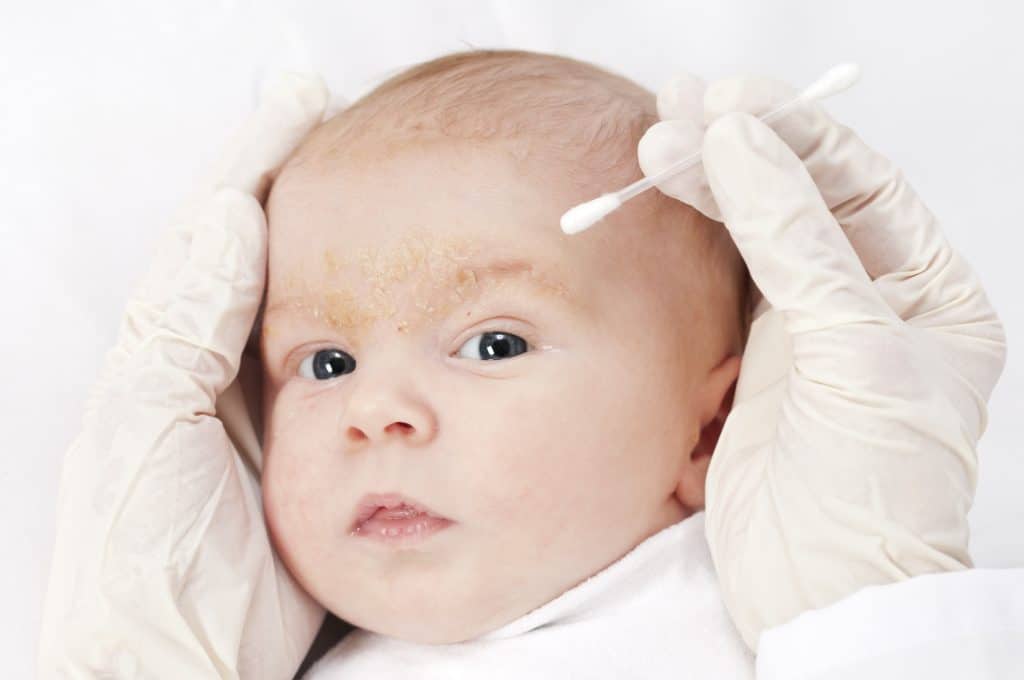Seborrheic Dermatitis Treatment: A Complete Guide to Relief
Seborrheic Dermatitis Treatment: Seborrheic dermatitis is a chronic yet manageable skin condition that impacts millions of people globally. Known for its persistent redness, flaking, and itching, it primarily affects areas rich in sebaceous (oil) glands, such as the scalp, face, and chest. While not dangerous, its symptoms can disrupt daily life and impact confidence.
In this guide, you’ll find everything you need to know about seborrheic dermatitis, including its causes, symptoms, and the most effective treatment options. You’ll also learn how incorporating Bragan Skincare’s Atopic Cream, enriched with the healing properties of snail mucin, can help restore your skin’s health and radiance.

What is Seborrheic Dermatitis?
Seborrheic dermatitis is a form of eczema that typically develops in areas where oil production is high. It often presents as red, scaly patches accompanied by dandruff. This condition can appear at any age, from infants experiencing “cradle cap” to adults facing recurrent flare-ups. The symptoms may range from mild dryness to severe irritation, depending on individual triggers and care routines.
How Common is Seborrheic Dermatitis?
Seborrheic dermatitis affects:
- Infants: About 10% experience cradle cap, which typically resolves on its own by the time they reach age one.
- Adults: This condition affects approximately 5% of the general population, with men being slightly more susceptible.
- Certain Medical Conditions: Individuals with weakened immune systems or chronic illnesses, such as Parkinson’s disease or HIV/AIDS, have a higher risk.
Is Seborrheic Dermatitis Contagious?
The short answer: No. Seborrheic dermatitis is a non-infectious condition caused by internal factors like immune responses or external triggers, not by a contagious agent.
Causes of Seborrheic Dermatitis
Although the precise cause of seborrhoeic dermatitis is unknown, several factors influence its development.
1. Fungal Overgrowth
It is believed that the yeast Malassezia, which naturally exists on the skin, plays a major role. In individuals with seborrheic dermatitis, this fungus grows excessively in oily areas, leading to irritation and inflammation.
2. Overactive Sebaceous Glands
Excessive oil production creates an ideal environment for Malassezia to thrive, resulting in redness, flaking, and irritation.
3. Genetic Predisposition
If you have a family history of seborrheic dermatitis or other inflammatory skin conditions, you’re more likely to develop it.
4. Environmental and lifestyle triggers.
- Weather: Symptoms often worsen in cold, dry weather.
- Stress: Emotional or physical stress can exacerbate flare-ups.
- Diet: Consuming high sugar and processed food may increase inflammation.
- Sleep Deprivation: Poor sleep can weaken the immune system, making symptoms harder to manage.
Symptoms and Signs of Seborrheic Dermatitis
Identifying seborrheic dermatitis early is crucial for effective management. Here’s what to look out for:
Common Symptoms
- Persistent dandruff, sometimes oily or flaky.
- There are greasy-looking red spots on the skin.
- There is itching and discomfort, especially in the affected areas.
- Scales of white or yellow appear on the scalp, eyebrows, or nose.
Advanced Symptoms
- There are thickened skin plaques, particularly on the scalp.
- Burning or stinging sensations.
- Crusting and oozing in severe cases.
Infants vs. Adults
In infants, seborrheic dermatitis (commonly known as cradle cap) appears as thick, yellowish scales on the scalp. In adults, it tends to recur and may require consistent management to keep symptoms under control.

Diagnosis of Seborrheic Dermatitis
A dermatologist can diagnose most cases of seborrheic dermatitis through a physical exam. However, severe or unclear cases might require further testing.
How was it diagnosed?
- Visual Examination: Dermatologists look for characteristic redness, scaling, and oily patches.
- Skin Biopsy: Rarely, doctors may take a small skin sample to rule out other conditions.
Differential Diagnosis
Seborrheic dermatitis shares similarities with other conditions, making an accurate diagnosis essential.
- Psoriasis: Often more severe with silver-like scales.
- Eczema: Features intense itching and dry patches, without greasy scaling.
- Rosacea: This condition causes redness but lacks dandruff-like scaling.
Effective Seborrheic Dermatitis Treatments
Treating seborrheic dermatitis requires a combination of skincare, medical treatments, and lifestyle adjustments. Let’s explore the best options.
Over-the-Counter Solutions
1. Anti-Dandruff Shampoos
Shampoos with active ingredients like ketoconazole, zinc pyrithione, or selenium sulphide are highly effective. These ingredients work by:
- Reducing yeast overgrowth.
- Slowing cell turnover to minimise scaling.
- Calming inflammation and redness.
2. Topical Creams
Non-prescription creams can help moisturise and soothe affected areas. Look for products that are:
- Hypoallergenic.
- It is abundant in ceramides or humectants such as glycerin.
Prescription Treatments
For more severe cases, dermatologists may recommend stronger treatments.
1. Steroid Creams
Corticosteroids quickly reduce inflammation and redness but should only be used short-term to avoid skin thinning.
2. Antifungal Medications
Oral antifungal pills like fluconazole target the root cause of seborrheic dermatitis in severe cases where topical treatments are insufficient.
3. Immunosuppressive Treatments
Doctors may prescribe medications like tacrolimus or pimecrolimus for chronic, unresponsive cases.
Home Remedies and Natural Treatments
Natural remedies can complement medical treatments or serve as a gentle alternative for mild symptoms.
1. Essential Oils
- Tea Tree Oil: Antifungal and soothing.
- Coconut Oil: Provides hydration while reducing inflammation.
2. DIY Scalp Masks
Combine aloe vera gel with a few drops of lavender essential oil for a calming, hydrating mask.
3. Dietary Adjustments
- Add omega-3-rich foods like salmon and flaxseeds.
- Reduce inflammatory foods like refined sugar and alcohol.

How Bragan Skincare’s Atopic Cream Can Help
Bragan Skincare’s Atopic Cream stands out as an innovative solution for seborrheic dermatitis. Made with snail mucin, this cream offers unique benefits that make it ideal for managing the condition.
Key Benefits of Snail Mucin
- Deep Hydration: Snail mucin is a natural humectant, keeping skin moisturised and preventing dryness.
- Anti-Inflammatory Properties: They reduce redness and irritation, thereby soothing active flare-ups.
- Skin Regeneration: Accelerates healing and repairs damaged skin, minimising scarring and scaling.
- Gentle Formulation: Safe for sensitive skin, free from harsh chemicals or artificial fragrances.
How to Use Bragan Skincare’s Atopic Cream
- Cleanse the affected area with a mild, pH-balanced cleanser.
- Apply a thin layer of the cream, focusing on inflamed or scaly patches.
- Repeat morning and evening for best results.
Regular use of this cream can improve skin texture, reduce symptoms, and help prevent future flare-ups.
Managing Seborrheic Dermatitis
Consistency is crucial when managing seborrheic dermatitis. Adopting a skincare routine and making small lifestyle changes can significantly improve your skin’s condition.
Daily Skincare Routine
- Cleanse: Use a gentle cleanser to remove dirt and excess oil.
- Moisturise: Lock in hydration with a soothing product like Bragan Skincare’s Atopic Cream.
- Protect: Always use sunscreen to shield sensitive skin from UV damage.
Lifestyle Adjustments
- Manage Stress: Practice mindfulness, yoga, or meditation.
- Avoid Irritants: Stick to hypoallergenic skincare and haircare products.
- Stay Hydrated: Drink plenty of water to support overall skin health.
Preventing Flare-Ups
Prevention is an essential aspect of seborrheic dermatitis treatment and management. By understanding and avoiding your triggers, you can reduce the frequency and severity of flare-ups.
Seasonal Adjustments
- In winter, use richer moisturisers to combat dryness.
- In summer, opt for lightweight, non-greasy products.
Dietary Tips
- Focus on anti-inflammatory foods like leafy greens, berries, and fatty fish.
- Avoid triggers like sugary snacks and fried foods.
Long-Term Care
Consistency in your skincare routine is the key to preventing recurring issues.
FAQs on Seborrheic Dermatitis Treatment
Can Seborrheic Dermatitis Be Cured?
No, but it can be effectively managed with the right treatments and care.
Is Seborrheic Dermatitis Contagious?
Not at all. Internal factors and environmental triggers cause this non-infectious condition.
How Long Does Treatment Take to Show Results?
Results vary, but you can expect improvements within 1–2 weeks of consistent use of Bragan Skincare’s Atopic Cream.
What Are the Best Shampoos for Seborrheic Dermatitis Treatment?
We strongly recommend shampoos containing ketoconazole, zinc pyrithione, or selenium sulphide.
Can Stress Cause Seborrheic Dermatitis?
Yes, stress is a common trigger for flare-ups.
What Happens If Seborrheic Dermatitis is Left Untreated?
Symptoms may worsen, leading to increased discomfort, scaling, and the risk of secondary infections.

Conclusion
Seborrhoeic dermatitis can be challenging, but it doesn’t have to control your life. With effective treatments, a consistent skincare routine, and supportive products like Bragan Skincare’s Atopic Cream, you can manage symptoms and maintain healthy, comfortable skin.
Start your journey to relief and confidence today!
Understanding the Various Types of Dermatitis
The term ‘dermatitis’ broadly refers to skin inflammation, causing symptoms like redness, itching, swelling, and irritation. While dermatitis is not contagious, it can significantly affect a person’s quality of life due to discomfort and visibility. With many types of dermatitis, each having unique triggers, symptoms, and treatments, understanding the distinctions is crucial for effective management and care.
In this comprehensive guide, we’ll explore the most common types of dermatitis, their causes, symptoms, and treatments.
1. Atopic Dermatitis
What Is It?
Atopic dermatitis, commonly referred to as eczema, is a chronic skin condition that often begins in childhood. It’s characterised by dry, itchy, and inflamed skin. Atopic dermatitis is part of the “atopic triad,” which includes asthma and hay fever, and tends to run in families.
Causes and Triggers
Although the precise cause remains unclear, experts believe a combination of genetic and environmental factors is responsible. Triggers may include:
- Allergens (pollen, pet dander).
- Irritants (soaps, detergents).
- Weather changes, particularly cold or dry air.
- Stress and hormonal changes.
Symptoms
- Red, itchy rashes, often on the face, neck, and hands.
- Thickened, cracked, or scaly skin.
- Fluid-filled bumps that can ooze when scratched.
Treatment
- Moisturising creams and ointments to keep the skin hydrated.
- Topical corticosteroids to reduce inflammation.
- Antihistamines to alleviate itching.
- Avoidance of triggers like harsh soaps and allergens.
2. Contact Dermatitis
What Is It?
Contact dermatitis occurs when the skin comes into direct contact with an irritant or allergen, causing a localised reaction. It can be either irritant or allergic in nature.
Types of Contact Dermatitis
- Irritant Contact Dermatitis: Caused by exposure to substances like chemicals, soaps, or detergents.
- Allergic Contact Dermatitis: Triggered by allergens such as nickel, latex, or fragrances.
Symptoms
- Redness and swelling.
- Itching or burning sensation.
- Blisters or hives in severe cases.
Treatment
- Identifying and avoiding the offending substance.
- Using topical corticosteroids to reduce inflammation.
- Applying emollients to soothe the skin.
- To eliminate irritants, wash the affected area with mild soap.
3. Seborrheic Dermatitis
What Is It?
Seborrheic dermatitis is a chronic form of dermatitis that primarily affects areas with high oil production, such as the scalp, face, and chest. It is commonly known as dandruff when it affects the scalp and cradle cap in infants.
Causes
Seborrheic dermatitis is linked to an overgrowth of Malassezia, a yeast that naturally lives on the skin. It may also be influenced by:
- Hormonal changes.
- Stress and fatigue.
- Cold, dry weather.
Symptoms
- Greasy, yellowish scales.
- Red, itchy patches on the scalp, face, or ears.
- Flaking skin that resembles dandruff.
Treatment
- Medicated shampoos containing ketoconazole, zinc pyrithione, or selenium sulphide.
- Topical antifungal or corticosteroid creams.
- Gentle cleansing to remove excess oil and scales.
4. Nummular Dermatitis
What Is It?
Nummular dermatitis, also known as discoid eczema, is characterised by coin-shaped, itchy patches on the skin. Environmental factors may trigger it in people with very dry skin.
Causes
- Dry skin, particularly in winter.
- Allergies or irritants.
- Skin injuries such as cuts, insect bites, or burns.
Symptoms
- Circular, red, and itchy patches.
- Crusting or oozing in severe cases.
- Commonly affects the legs, arms, and torso.
Treatment
- Regular use of emollients to prevent dryness.
- Topical corticosteroids to reduce inflammation.
- Antibiotics in cases of secondary infection.
- Avoiding harsh soaps and detergents.
5. Dyshidrotic Dermatitis
What Is It?
Dyshidrotic dermatitis affects the hands and feet, causing small, itchy blisters. Excessive sweating or exposure to irritants can trigger it, making it more common in warmer months.
Causes
- Stress or anxiety.
- Excessive moisture or prolonged water exposure.
- Allergic reactions to metals like nickel or cobalt.
Symptoms
- Tiny, fluid-filled blisters on fingers, palms, or soles.
- Intense itching and burning sensation.
- Peeling or cracking skin as the blisters heal.
Treatment
- Cold compresses to reduce inflammation.
- Topical corticosteroids or calcineurin inhibitors.
- Moisturisers to protect the skin barrier.
- Avoiding prolonged exposure to water or irritants.
6. Perioral Dermatitis
What Is It?
Perioral dermatitis is a facial rash that develops around the mouth, nose, or eyes. Women are more likely to experience it, and it could be associated with excessive use of topical steroids or specific cosmetic products.
Causes
- Overuse of steroid creams.
- Cosmetic products, particularly heavy moisturisers.
- Hormonal changes or stress.
Symptoms
- Red, bumpy rash around the mouth, nose, or eyes.
- Burning or stinging sensation.
- Flaky or scaly skin.
Treatment
- Discontinuing the use of topical steroids or offending cosmetics.
- Topical or oral antibiotics.
- Gentle, non-comedogenic skincare products.
7. Stasis Dermatitis
What Is It?
Stasis dermatitis occurs when poor circulation in the lower legs leads to fluid build-up, causing inflammation. People with varicose veins or chronic venous insufficiency often experience it.
Causes
- Poor blood circulation.
- Chronic venous insufficiency or varicose veins.
- Prolonged standing or sitting.
Symptoms
- Swollen, discoloured skin on the lower legs.
- Itching and scaling.
- Open sores or ulcers in severe cases.
Treatment
- Compression stockings to improve circulation.
- Elevating the legs to reduce swelling.
- Topical corticosteroids to manage inflammation.
- Treating underlying venous insufficiency.
8. Neurodermatitis
What Is It?
Excessive scratching or rubbing of the skin triggers neurodermatitis, also known as lichen simplex chronicus. It often starts with an itchy patch that becomes more irritated over time.
Causes
- Stress or anxiety.
- Chronic scratching due to other skin conditions.
- Tight clothing or skin irritation.
Symptoms
- Thickened, leathery patches of skin.
- Intense itching, particularly at night.
- Darker or lighter pigmentation in affected areas.
Treatment
- Breaking the itch-scratch cycle using anti-itch creams or antihistamines.
- Corticosteroid creams to reduce inflammation.
- Stress management techniques such as mindfulness or relaxation exercises are beneficial.
Preventing Dermatitis
Although we cannot prevent all types of dermatitis, we can significantly reduce the risk of flare-ups by adopting good skincare habits.
- Moisturise regularly: Keeping the skin hydrated is essential for maintaining a healthy skin barrier.
- Avoid known irritants: Be mindful of soaps, detergents, or fabrics that may irritate the skin.
- Use gentle skincare products: Opt for fragrance-free, hypoallergenic products.
- Manage stress: Practice relaxation techniques to minimise stress-induced flare-ups.
- Protect your skin: Wear gloves when using chemicals or washing dishes and sunscreen to protect against UV damage.
Conclusion
Dermatitis encompasses a wide range of skin conditions, each with unique characteristics and treatment requirements. Understanding the type of dermatitis you’re dealing with is the first step towards effective management. Whether it’s atopic dermatitis, seborrheic dermatitis, or contact dermatitis, timely intervention and consistent care can make a significant difference.
If you’re struggling with persistent or severe symptoms, consult a dermatologist for a tailored treatment plan. With the right approach, it’s possible to manage dermatitis and maintain healthy, comfortable skin.
Atopic Cream for Sensitive Skin
Our atopic cream is designed to treat skin conditions. These may be inherited or as a result of sensitivity to allergens such as soaps, detergents, stress and the weather. Made from snail mucin – a natural ingredient with a wealth of healing, hydrating, and anti-inflammatory properties. Our Atopic Cream is dermatologically tested and effective in treating chronic skin conditions including eczema, psoriasis, and dermatitis. It brings relief to those suffering from irritated or itchy skin, rashes and allergic reactions. Snail mucin also reduces scar tissue and stretch marks and is soothing for dry and sensitive skin. Incorporate snail mucin cream…
Featured Bragan Skincare Products
-
€39.99 – €100.00Price range: €39.99 through €100.00Select options This product has multiple variants. The options may be chosen on the product page
-
€100.00Select options This product has multiple variants. The options may be chosen on the product page


